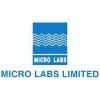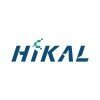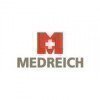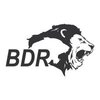Filter interviews by
Honour Lab Interview Questions and Answers
15 Interview questions
My strength is attention to detail, while my weakness is over-analyzing data, which I am actively working to improve.
Strength: Attention to detail - I meticulously review data to ensure accuracy, which helps in maintaining high-quality standards.
Example: In my previous role, I identified a minor discrepancy in a batch record that could have led to significant issues.
Weakness: Over-analyzing data - I sometimes spen...
During my training, I gained hands-on experience in analytical techniques and quality control processes essential for a QC Chemist role.
Learned various analytical techniques such as HPLC and GC for substance analysis.
Gained experience in performing stability studies to assess product shelf life.
Understood the importance of Good Manufacturing Practices (GMP) in maintaining product quality.
Participated in method val...
Monte Carlo simulation uses randomness for predictions, while Level of Detail focuses on data representation complexity.
Monte Carlo simulation involves statistical sampling to estimate outcomes, e.g., predicting drug efficacy based on variable patient responses.
Level of Detail (LOD) refers to the complexity of data representation, e.g., using simplified models for initial analysis and detailed models for final val...
Swab samples involve direct contact sampling, while rinsed samples involve solvent extraction from surfaces or equipment.
Swab samples are collected by wiping a surface with a sterile swab to capture residues.
Rinsed samples involve rinsing equipment or surfaces with a solvent to collect any soluble residues.
Example of swab sampling: Testing a tablet press for contamination after cleaning.
Example of rinsed sampling:...
Yes, I have experience working on ISO documentation.
I have worked on developing and implementing ISO 14001 Environmental Management System documentation.
I have experience in maintaining ISO 45001 Occupational Health and Safety Management System documentation.
I have conducted internal audits to ensure compliance with ISO standards.
I have updated ISO documentation based on changes in regulations or company policies.
Handled audits by conducting thorough inspections, documenting findings, and implementing corrective actions.
Conducted regular audits to ensure compliance with EHS regulations
Documented audit findings and communicated them to relevant stakeholders
Implemented corrective actions to address any non-compliance issues
Maintained audit records for future reference
Batch procedure is a method of processing data or tasks in groups or batches rather than individually.
Batch procedure involves grouping similar tasks together to be executed at the same time.
It helps in optimizing resources and improving efficiency by reducing processing time.
Examples include batch processing in computer systems, where multiple jobs are executed together, and batch production in manufacturing, whe...
Validation is the process of ensuring that a product, service, or system meets the requirements and specifications set forth.
Validation involves checking if the product meets the customer's requirements.
It ensures that the product is fit for its intended use.
Validation can include testing, inspection, and review processes.
Examples of validation include software testing to ensure it functions correctly and validati...
Normality refers to the concentration of a solution in terms of the number of equivalents of solute per liter of solution.
Normality is a measure of concentration used in acid-base reactions.
It is defined as the number of equivalents of solute per liter of solution.
For example, a 1N solution of HCl contains 1 mole of H+ ions per liter of solution.
Normality is different from molarity, which is a measure of concentra...
Molarity is a measure of the concentration of a solution in terms of the number of moles of solute per liter of solution.
Molarity is expressed in units of moles per liter (mol/L or M)
It is calculated by dividing the number of moles of solute by the volume of the solution in liters
For example, a solution containing 0.5 moles of solute in 1 liter of solution has a molarity of 0.5 M
Honour Lab Interview Experiences
23 interviews found
(2 Questions)
- Q1. What is the difference between Monte Carlo (MC) simulation and Level of Detail (LOD)?
- Ans.
Monte Carlo simulation uses randomness for predictions, while Level of Detail focuses on data representation complexity.
Monte Carlo simulation involves statistical sampling to estimate outcomes, e.g., predicting drug efficacy based on variable patient responses.
Level of Detail (LOD) refers to the complexity of data representation, e.g., using simplified models for initial analysis and detailed models for final validati...
- Q2. What is the difference between swab samples and rinsed samples?
- Ans.
Swab samples involve direct contact sampling, while rinsed samples involve solvent extraction from surfaces or equipment.
Swab samples are collected by wiping a surface with a sterile swab to capture residues.
Rinsed samples involve rinsing equipment or surfaces with a solvent to collect any soluble residues.
Example of swab sampling: Testing a tablet press for contamination after cleaning.
Example of rinsed sampling: Rins...
Interview Preparation Tips
(2 Questions)
- Q1. What is your current role?
- Ans.
I am currently working as a Project Manager in a software development company.
Leading a team of developers and ensuring project deadlines are met
Collaborating with stakeholders to gather requirements and provide updates
Creating project plans and tracking progress using project management tools
- Q2. Senior Manager in corporate quality Assurance
(1 Question)
- Q1. What is your current role
- Ans.
I am currently working as a Project Manager in a software development company.
Leading a team of developers and coordinating project timelines
Creating project plans and monitoring progress
Communicating with stakeholders to ensure project requirements are met
(2 Questions)
- Q1. What is technical experience
- Ans.
Technical experience refers to the knowledge and skills related to specific technologies, tools, or systems.
Hands-on experience with software development languages such as Java, Python, or C++
Familiarity with database management systems like MySQL or Oracle
Proficiency in using project management tools such as Jira or Trello
Experience with networking protocols like TCP/IP or DNS
Ability to troubleshoot hardware and softw...
- Q2. What are the changes you initiated
- Ans.
I initiated changes in the scheduling system to improve efficiency and reduce overtime costs.
Implemented a new scheduling software to streamline the process
Introduced cross-training for employees to increase flexibility in scheduling
Analyzed data on peak hours and adjusted staffing levels accordingly
I appeared for an interview in Feb 2025, where I was asked the following questions.
- Q1. Tell me about your self briefly.
- Q2. What you learn into your training period
- Ans.
During my training, I gained hands-on experience in analytical techniques and quality control processes essential for a QC Chemist role.
Learned various analytical techniques such as HPLC and GC for substance analysis.
Gained experience in performing stability studies to assess product shelf life.
Understood the importance of Good Manufacturing Practices (GMP) in maintaining product quality.
Participated in method validati...
- Q3. What is GMP, GDP and instrumentation releted knowledge
- Q4. What is your strength and weakness
- Ans.
My strength is attention to detail, while my weakness is over-analyzing data, which I am actively working to improve.
Strength: Attention to detail - I meticulously review data to ensure accuracy, which helps in maintaining high-quality standards.
Example: In my previous role, I identified a minor discrepancy in a batch record that could have led to significant issues.
Weakness: Over-analyzing data - I sometimes spend too...
- Q5. All about my knowledge
Interview Preparation Tips
I applied via Walk-in and was interviewed in Oct 2024. There was 1 interview round.
(2 Questions)
- Q1. Self entradution
- Q2. Safety tips and safety process safety
(3 Questions)
- Q1. What is GMP and cGMP
- Ans.
GMP stands for Good Manufacturing Practices and cGMP stands for current Good Manufacturing Practices.
GMP is a set of guidelines that ensure products are consistently produced and controlled according to quality standards.
cGMP is an updated version of GMP that incorporates current best practices and technologies.
Both GMP and cGMP are crucial in industries like pharmaceuticals, food, and cosmetics to ensure product safet...
- Q2. What is batch procedure
- Ans.
Batch procedure is a method of processing data or tasks in groups or batches rather than individually.
Batch procedure involves grouping similar tasks together to be executed at the same time.
It helps in optimizing resources and improving efficiency by reducing processing time.
Examples include batch processing in computer systems, where multiple jobs are executed together, and batch production in manufacturing, where pr...
- Q3. What is validation
- Ans.
Validation is the process of ensuring that a product, service, or system meets the requirements and specifications set forth.
Validation involves checking if the product meets the customer's requirements.
It ensures that the product is fit for its intended use.
Validation can include testing, inspection, and review processes.
Examples of validation include software testing to ensure it functions correctly and validation of...
I appeared for an interview before Jun 2024, where I was asked the following questions.
- Q1. What checkpoints do you verify before releasing an API batch?
- Ans.
Before releasing an API batch, several critical checkpoints ensure functionality, security, and performance are met.
Code Review: Ensure all code changes are reviewed for quality and adherence to standards.
Automated Testing: Run unit tests and integration tests to verify that the API behaves as expected.
Performance Testing: Check response times and load handling to ensure the API can manage expected traffic.
Security Che...
- Q2. What is data integrity, and how can data integrity issues be reduced?
- Ans.
Data integrity ensures accuracy and consistency of data over its lifecycle, crucial for reliable decision-making.
Implement validation rules to check data accuracy (e.g., format checks for email addresses).
Use access controls to limit who can modify data (e.g., only authorized personnel can update patient records).
Regularly back up data to prevent loss and ensure recovery (e.g., daily backups of financial records).
Condu...
Assistant Environment Health and Safety Manager Interview Questions & Answers
posted on 8 Aug 2024
I applied via Walk-in and was interviewed before Aug 2023. There was 1 interview round.
(3 Questions)
- Q1. Introduces you’re self
- Ans.
I am a dedicated EHS professional with 5 years of experience in implementing safety programs and ensuring compliance with regulations.
Bachelor's degree in Environmental Health and Safety
Certified Safety Professional (CSP) certification
Experience conducting safety audits and inspections
Implemented training programs on hazard communication and PPE
Strong knowledge of OSHA regulations
- Q2. Your experience on audit handling briefly
- Ans.
Handled audits by conducting thorough inspections, documenting findings, and implementing corrective actions.
Conducted regular audits to ensure compliance with EHS regulations
Documented audit findings and communicated them to relevant stakeholders
Implemented corrective actions to address any non-compliance issues
Maintained audit records for future reference
- Q3. Have you work on iso documentation
- Ans.
Yes, I have experience working on ISO documentation.
I have worked on developing and implementing ISO 14001 Environmental Management System documentation.
I have experience in maintaining ISO 45001 Occupational Health and Safety Management System documentation.
I have conducted internal audits to ensure compliance with ISO standards.
I have updated ISO documentation based on changes in regulations or company policies.
Interview Preparation Tips
- Health and safety management
Scientific question and development Novel Process.
Interview Preparation Tips
(2 Questions)
- Q1. Based on our daily work, handling chemicals reagents like that
- Q2. Our job responsibility, subject orriented, analytical data etc
Interview Preparation Tips
Top trending discussions






Honour Lab Interview FAQs
Some of the top questions asked at the Honour Lab interview -
Tell us how to improve this page.
Honour Lab Interviews By Designations
- Honour Lab Junior Research Associate Interview Questions
- Honour Lab QC Chemist Interview Questions
- Honour Lab Senior Executive Interview Questions
- Honour Lab Production Interview Questions
- Honour Lab HR Recruiter Interview Questions
- Honour Lab Data Analyst Interview Questions
- Honour Lab Assistant Manager Interview Questions
- Honour Lab Research Scientist Interview Questions
- Show more
Interview Questions for Popular Designations
Overall Interview Experience Rating
based on 27 interview experiences
Difficulty level
Duration
Interview Questions from Similar Companies
Honour Lab Reviews and Ratings
based on 366 reviews
Rating in categories
|
Chemist
138
salaries
| ₹1.7 L/yr - ₹4.1 L/yr |
|
Junior Chemist
91
salaries
| ₹1.6 L/yr - ₹3.7 L/yr |
|
Assistant Manager
82
salaries
| ₹4.3 L/yr - ₹11.2 L/yr |
|
Executive
80
salaries
| ₹3 L/yr - ₹6.5 L/yr |
|
Senior Chemist
71
salaries
| ₹2.4 L/yr - ₹5 L/yr |

Hetero

Micro Labs

Biological E

USV
- Home >
- Interviews >
- Honour Lab Interview Questions













